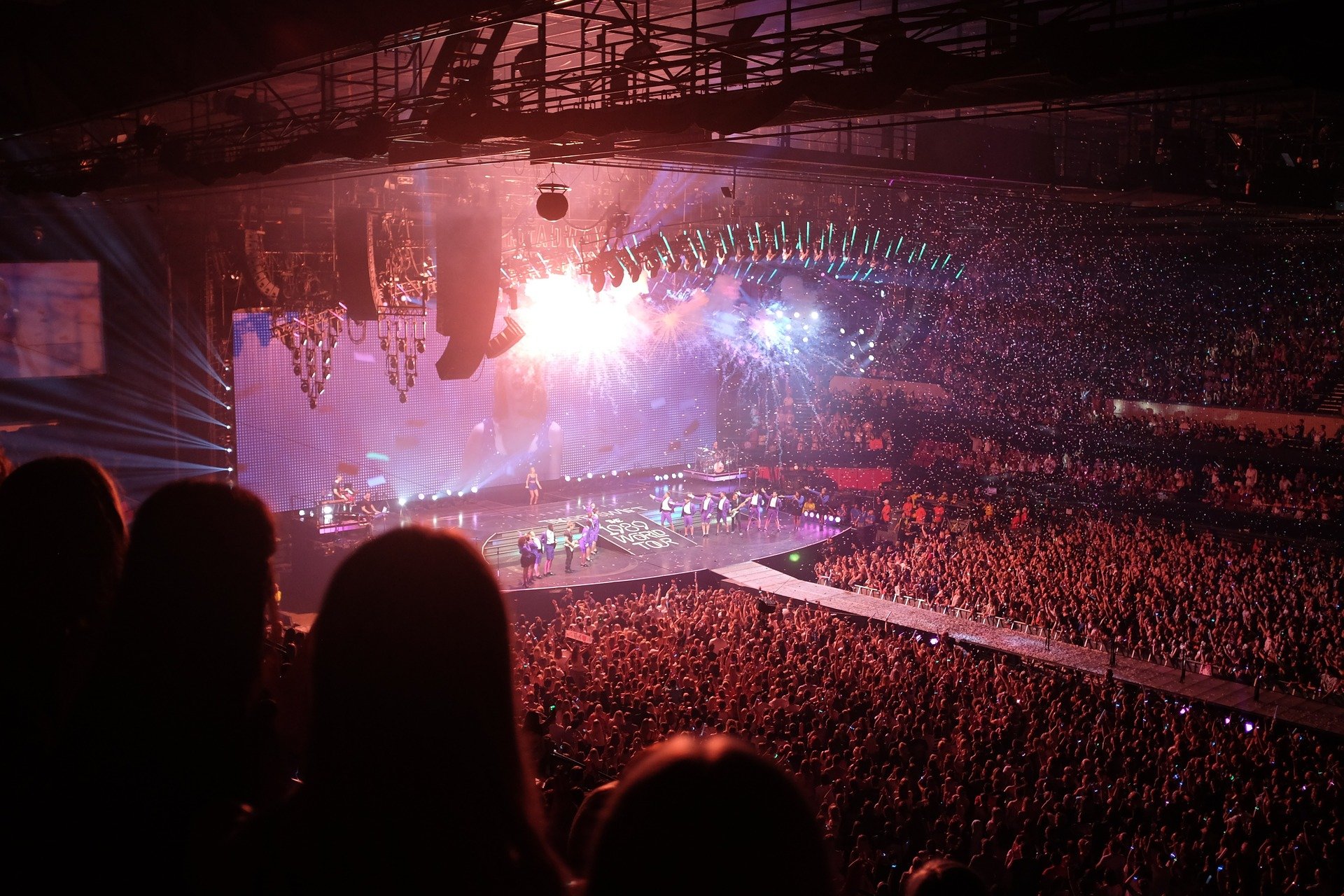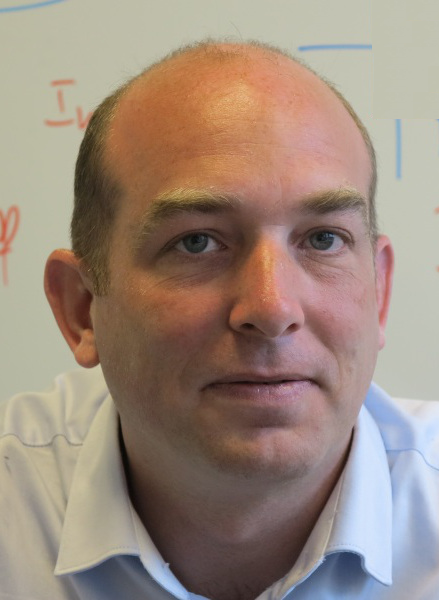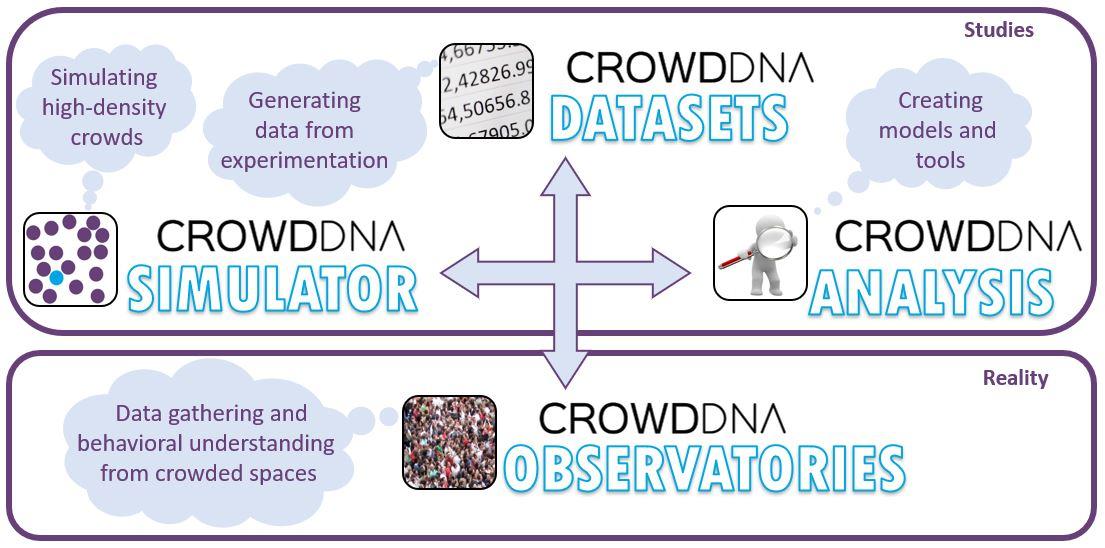
Hillsborough Stadium, Sheffield, UK. April 15, 1989. Some 25,000 football fans are attending a match when, lo and behold, it dawns on authorities that something is going badly awry: 96 people have just being crushed to death in the overcrowded central pen. “Today, most mass events are monitored throught video. But when a crush is being spotted, it's almost too late. Hence the need for a technology that could quickly supply a precise estimate of a crowd state and predict its dynamics before the worse occurs” sums-up Julien Pettré, the Inria scientist in charge of coordinating CrowdDNA.
Started in November 2020, this 42-month research project is funded to the tune of €3M through the Open tier of the Future Emerging Technology (FET) Horizon 2020 program. Beside Inria, it involves Leeds University, Madrid Rey Juan Carlos University, Ulm University, Jülich research center, as well as two companies: Crowd Dynamics International and Onhys.
Crowd behavior is actually a complex chemistry. “In public transportation, density oftentimes reaches very high levels in what are mostly closed space areas. Yet, it doesn't end up in deathly crushes every day! Conversely, disasters often happen in open environments where there would be enough room for everyone to go about if people didn't flock together in one particular spot, for intance because they are trying to reach an event. In that regard, everyone remembers the Duisburg Love Parade Festival which ended up with 21 attendees killed and over 500 injured. The problem in such situation doesn't really stem from the overall density but rather from the sudden occurrence of local highly-dense hot spots.” Incidently, “density, in and of itself, is not explicitly controllable, for one can't prevent people from suddenly massing together.”
The concentration becomes dangerous “when you don't have any wriggle room anymore and when you start to feel the pressure upon yourself. However, the critical level still may vary according to population type and context. People around the world have different morphologies and venues are patronized by different publics. You'll find many kids in park themes, for instance.” Finding a universal yardstick could thus prove elusive.
Shockwave
“Our intention is not to try to detect preestablished density thresholds ―as these might turn out not to be so relevant after all― but rather to ascertain that a crowd is reaching a dangerous level because close contacts are on the rise.” And how can one kown that ? “By checking the way the crowd moves. If you consider the crowd as a set of particles, each enjoying some degree of liberty or being deprived of this minimal wriggle room, there is a difference in the way motion spreads out. When jam-packed, the crowd can't absorb the energy it receives. If you still have some room around you, you can absorb a push. If you are in too close a contact, you can't.” In such instance, motion starts to propagate like a shockwave, a famous example thereof being the dramatic surge among spectators during a concert of the Oasis rock band in 2005.
In order to spot the early signs of this phenomenon, the scientists will tap into the video feed. “Most events have CC cameras and it's always easier to work from an existing infrastructure. But we do not rule out using other sensing modalities. We are not so much settled on one particular type of data input than on one particular type of analysis, which can be described as follows: given the sheer size of the crowd, we do not intend to conduct a fine-grained behavioral analysis of every single individual within this group. We believe we should rather stick to gross-grained information.” In other words: check the overall motion of the crowd and not the motion of individuals per se.
But first, several deadlocks must be overcome. “To begin with, we need to better understand the relations between all those physical contacts between people. It's a very complex matter. We don't even know against which parts of the body pushes and shoves are actually exerted. Against shoulders? Feet? Hips? Neither do we know how these forces propagate from one person to another. And even less so at large scale. On top of that, from a behavioral perspective, we don't know how people react to being jostled. Humans are not inert objects. They may not just take the pressure and pass it to neighbors. If pushed around, they may want to push back. These phenomena are largely unknown.”
Combining Biomechanical and Behavioural Simulation
The academic partners plan to build a corpus of data at three different scales. “Our colleagues in psychology at Ulm University will focus on the interaction in groups of two or three people: If I'm pushed, I push back in such or such a way. So on and so forth. Reactions might differ due to a variety of individual behaviors as well as people's characteristics ―if an elderly or a child is being shoved for instance. Nevertheless, we hope to find out a number of invariants and get a grasp of the broad spectrum of reactions.”
Conducted by physicists at the Jülich research center, “the second experiment type will deal with a scale of ten to a hundred people. It aims more particularly at studying the propagation of motion through a crowd. The novelty will consist in coupling very small scale physical observations, down to arms and legs, to a larger-scale visual observations of several tens of people. If we manage to couple both, we will pretty much know whether people are in a risk-free acceptable situation or not.”
Push buttons
A key added value of the project, “these observations are hard to obtain since you can hardly build an experiment in which participants are put in a situation of being bounced and jostled about.” Also compounding the issue is the lack of adequate sensors. “Covering a full body with push-button-like force sensors is impractical. So we plan to use pressure sensing textile as well. The latter provides a better cover but does not measure the force per se. It supplies nor its directionality nor its amplitude. Therefore you don't know who is pushing who.” Hence the need for combining both techniques.
After gleaning the experimental data and establishing the link between the local condition of an individual and the overall motion of a crowd, the researchers will build simulation models meant to study a greater number of configurations than could otherwise be observed. “These physical models will be devised in collaboration with Madrid and Leeds universities who have an expertise in this field.”
Machine Learning
Once they get a good insight of how local interaction eventually snowball to large scale motion, the scientists will go the other way around. “Now that the force exchange between individuals is well understood, let's learn the inverse relation. Let's try to see if the crowd moves ‘normally’ or if it displays propagation signs showing that people are in too close a contact. And instead of doing this in a formal way, we will use machine learning.” The algorithm will conduct a real-time analysis of a live feed and detect the motion pattern now known to result from too packed a crowd.
The whole approach is completely unchartered territory.

Verbatim
We hope in particular that the dataset resulting from this exploratory work will be of interest to other scientific teams and give rise to a novel research axis, which is well in tune with the purpose of FET Open.
Inria researcher and CrowdDNA coordinator
"Indeed, this EU funding program isn't meant to deliver an immediately transferable technology but rather to support early stage research exploring less travelled roads that might ultimately lead to new directions."
Future applications
Having said that, CrowdDNA has also set a foot in the industry. Two of its partners are well-established companies in the field. “Crowd Dynamics International is a consultancy with a lot of expertise in crowd management. They will facilitate access to mass events. They will also put us in touch with the stakeholders that could have use of our technologies. As to Onhys, they specialize in pedestrian flow simulation. They would be interested in picking up our prototype simulation models and inserting them into a commercial-grade crowd simulator. Having these two companies on board is crucial as they will be the vectors of applications in the future.”

